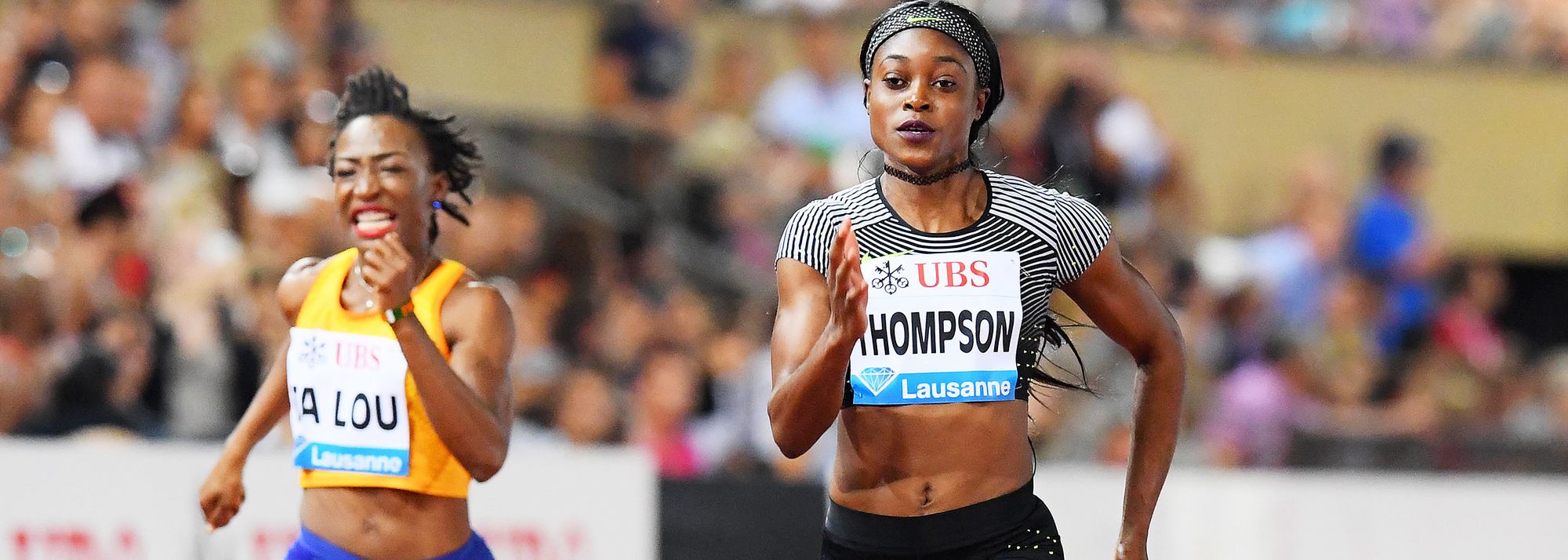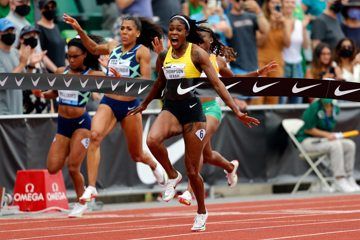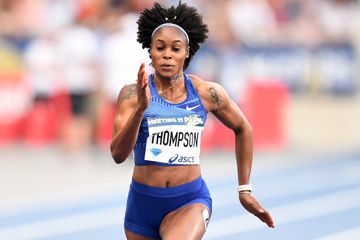Elaine Thompson wins the 100m at the Diamond League meeting in Lausanne (© Gladys von der Laage)
There could hardly be a more suitable setting for the Wanda Diamond League’s first European stop after the Tokyo Olympics than the Swiss city that happens to be home to the Olympic Museum.
The glittering array of stellar track and field talent lined up for the main programme of the Athletissima meet in Lausanne on Thursday (26), and the City High Jump that precedes it on Wednesday (25), were responsible for claiming a colossal haul of 19 gold medals in Japan’s capital city, several of them earning their rewards with landmark achievements in the Olympic arena.
Norway’s 400m hurdling Superman Karsten Warholm and the regal Venezuelan triple jumper Yulimar Rojas did so with world-record-shattering aplomb. The Jamaican sprint queen Elaine Thompson-Herah, the US big shot Ryan Crouser and the princely Norwegian middle distance master Jakob Ingebritsen did so with Olympic record-breaking marks.
Add the Swedish pole vault phenomenon Armand Duplantis to the mix and you have a magnificent seven (possibly more) capable of making further track and field history in the high-octane, adrenaline-charged melting pot that is sure to be the Stade Olympic de la Pontaise with an expected capacity 12,200 crowd.
There is also the small matter of the hors d’oeuvre to the main course.
The city men’s high jump on Wednesday (25) had been scheduled to reunite the gentlemanly Qatari Mutaz Essa Barshim and the grand Italian showman Gianmarco Tamberi, the close friends and rivals who harnessed the kind of Olympic spirit celebrated in Lausanne’s historic showcase to the Games by agreeing to share the gold medal spoils in Tokyo. That was until the Emir of Qatar, Sheikh Tamin bin Hamad Al-Thani, asked Barshim to be his guest of honour at a celebratory function back home on Thursday – an invitation that could not be refused.
Still, Tamberi will be joined in Lausanne’s city centre by Maksim Nedasekau, the Belarussian who fulfilled the Harry Lime role as the Third Man of the event in the Japanese capital – and who, lest it be forgotten, also cleared 2.37m to claim his bronze.
Thompson-Herah was the leading lady of the classic women’s 100m final in Tokyo, clipping 0.01 off Florence Griffith-Joyner’s 33-year-old Olympic record with a 10.61 clocking that made her the second fastest of all time behind the late US athlete.
Having blitzed to a 10.54 Diamond League record in Eugene, the 25-year-old Jamaican has now propelled herself within thinking distance, at least, of FloJo’s long-deemed-untouchable 10.49 world record that dates back to the 1988 US Olympic Trials in Indianapolis.
“I think the records are in reach because I ran 10.5 and I have so much more within me,” Thompson-Herah confessed in the aftermath of her Eugene performance. “I have a mission to complete.”
There has been a 100m world record on the Pointaise track before, of course. At the 1994 meeting Leroy Burrell shaved 0.01 off his close friend Carl Lewis’ men’s mark with a 9.85 clocking. Naturally, thoughts and prayers on the eve of another edition of the Athletissima will be with the former US sprinter, following the tragic death earlier this month of his son Cameron, a world U20 4x100m gold medallist.
Shelly-Ann Fraser-Pryce and Shericka Jackson, the compatriots who followed Thompson-Herah across the line in Tokyo and Eugene, will be seeking to get closer in another clean sweep this time.
The loaded field also includes the three women who took fourth, fifth and sixth behind the Jamaican trio in the Olympic final: Marie-Josee Ta Lou of the Ivory Coast and the Swiss duo Ajla del Ponte and Mujinga Kambundji. Del Ponte maintained her momentum with a 10.90 national record in La Chaud-de-Fonds on 14 August, while Kambundji recorded a wind-assisted 22.06 win ahead of Olympic bronze medallist Gabby Thomas in the 200m in Eugene.
Last year’s Athletissima was restricted to city centre action and the men’s pole vault produced a competition for the ages, Duplantis and Sam Kendricks duelling inexorably upwards as the sun set over Switzerland’s fourth largest municipality. It was the first contest in which two men cleared 6.02m, the Swede prevailing with 6.07m and his US rival clearing 6.02m.
This year Duplantis will be one of the new Olympic gold medallists in action in the main programme. After securing victory in Tokyo with what was, by his elevated standards, a routine first-time 6.02m clearance, he had three unsuccessful shots at raising his world record by one centimetre to 6.19m. Others having taken the spotlight in Tokyo with stunning new global and Olympic Games marks in their events, what price on Duplantis stealing the show with a 6.19m clearance in La Pontaise?
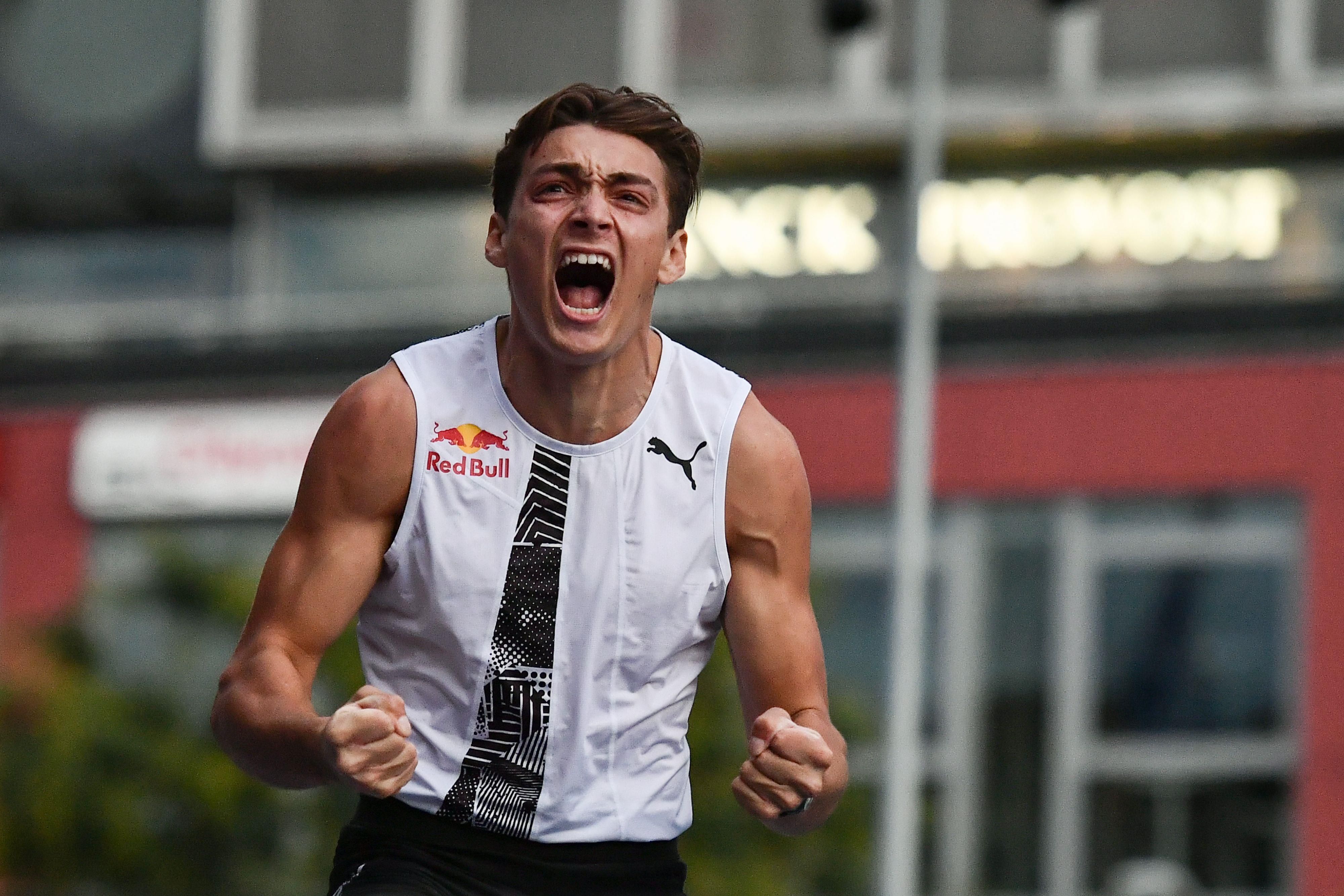
Kendricks, the two-time world champion, will be back in action and raring to go after the frustration of missing out on the Olympic Games because of a positive Covid Test. His US teammate Chris Nilsen, who took silver in Tokyo, and France’s former world record-holder Renaud Lavillenie are also in the field.
The most jaw-dropping world record on the track and in the field in Tokyo was, of course, Karsten Warholm’s Beamoneque, Boltesque – and perhaps now known as Warholmesque – 45.94 in the 400m hurdles. The Norwegian’s time would have won every Olympic flat 400m final until 1960.
The big question in Lausanne will be how fast the great metaphorical barrier-breaker can run one lap without any physical barriers in his way?
Warholm’s Norwegian record in the event, 44.87, dates back to 2017 and in 2019 he won the European indoor title in Glasgow, equalling Thomas Schonlebe’s 31-year-old continental indoor record on ‘the boards’ of 45.05. The German’s ancient European outdoor record, 44.33, will be in Warholm’s sights.
In the immediate aftermath of Warholm’s wonder run in Tokyo, the former world and Olympic 200m and 400m champion and world record holder Michael Johnson urged the 25-year-old to aim for a place in the history books as a 400m flat world champion.
The two-time 400m hurdles world champion will get an immediate chance to measure his credentials against three fellow medal winners from Tokyo: 43.72 performer Isaac Makwala (a 4x400m bronze medallist for Botswana), 44.40 man Vernon Norwood (who earned gold in the men’s 4x400m and bronze in the mixed 4x400m) and 44.48 runner Liemarvin Bonevacia ( a member of the Netherlands’ silver medal winning 4x400m team). Also in the field in Wilbert London, who won two relay golds for the US at the 2019 World Championships in Doha.
Norway’s other young gun of an Olympic track champion, Jakob Ingebrigtsen, also switches events, from 1500m to 3000m – and, like Warholm, he too has a European record in his sights.
At 20, the youngest of the Ingebrigtsen brothers already owns the continental marks for 1500m and 5000m and in Lausanne his sights will be set on Mohammed Mourhit’s 3000m figures of 7:26.62.
In potentially the most intriguing race of the night, the Olympic 1500m champion (and 3:47.24 Diamond League mile record setter in Eugene last Saturday) faces five medal winners from three other events in Tokyo.
They include two rivals who boast a similarly impressive scope, and who have both run 7:26 either indoors or out in the past 11 months: Olympic 10,000m champion Selemon Barega of Ethiopia and 10,000m bronze medallist Jacob Kiplimo, the Ugandan who won the world half marathon title last year.
The stacked field also features the second and third finishers from the 5000m final in Tokyo, Canada’s Moh Ahmed and Paul Chelimo of the USA, and Ethiopia’s world and Olympic steeplechase silver medallist Lamecha Girma.
Crouser only has two medallists to contend with in the shot, the men who took silver and gold behind his Olympic record 23.30m in Tokyo: US teammate Joe Kovacs and New Zealander Tom Walsh, respectively reigning world champions outdoors and in.
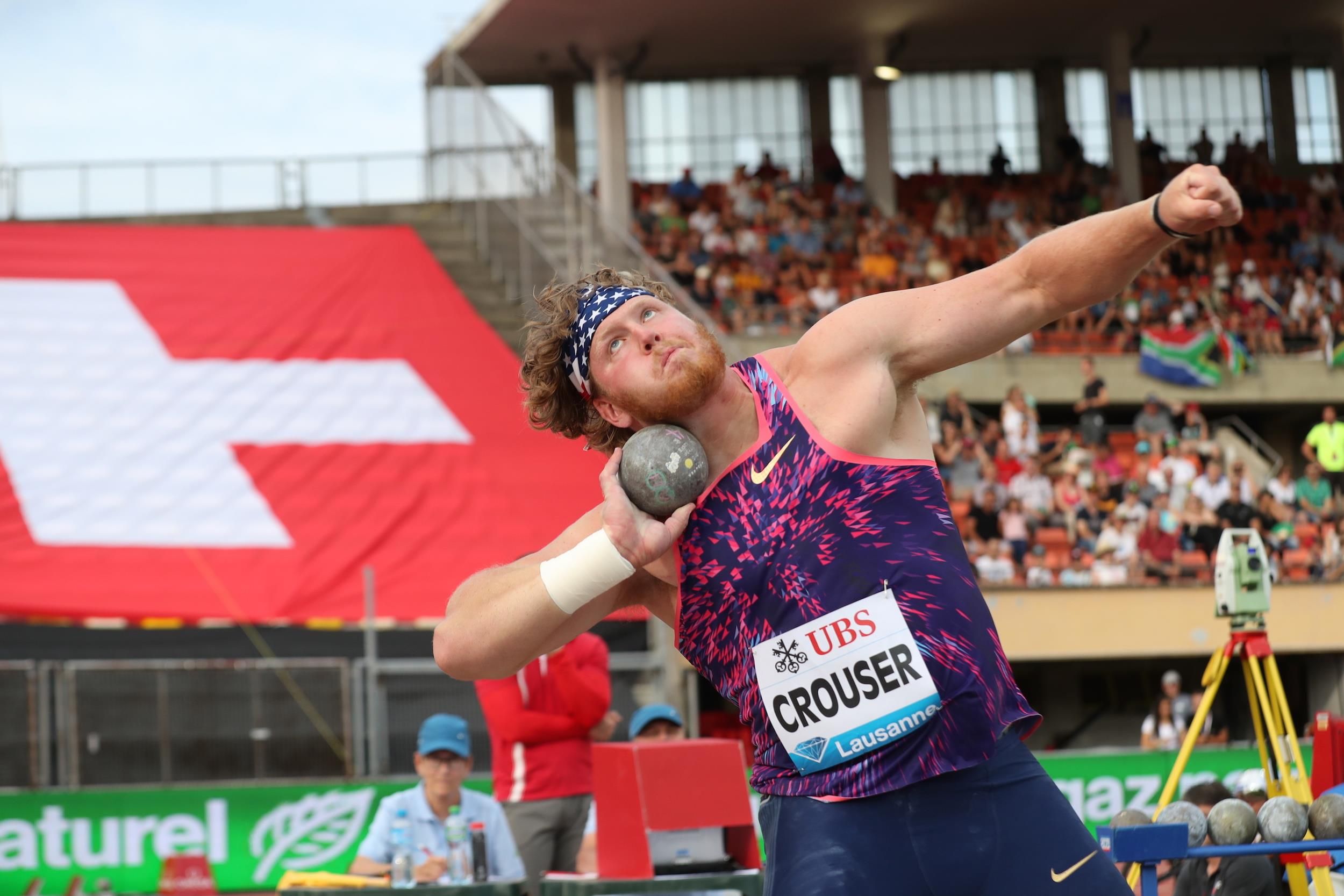
Having thrown a Diamond League record of 23.15m on home state ground in Eugene on Saturday, Crouser is on a record roll. Unbeaten in 21 finals now since losing the 2019 world outdoor title to Kovacs by one centimetre, his two-month-old world record figures, 23.37m, might be ready for revision.
Rojas’s global triple jump mark, 15.67m, is just over three weeks old but the long-legged Venezuelan could have it in her sights, having decided to switch from the long jump to contest her speciality in Lausanne. Portugal’s Patricia Mamona, who took silver in Tokyo with 15.01m, also competes.
Like the men’s shot put and the women’s 100m, the women’s high jump features the Olympic 1-2-3, Mariya Lasitskene locking horns again with the upwardly mobile Australian Nicola McDermott and Ukraine’s Yaroslava Mahuchikh.
The men’s 800m boasts the top seven from Tokyo, led by medal winners Emmanuel Korir and Ferguson Rotich of Kenya and Pole Patryk Dobek but, sadly, illness has deprived the men’s javelin of India’s freshly-crowned Olympic champion Neeraj Chopra. Jakub Vadlejch and Vitezslav Vesely, the Czechs who took silver and bronze, will have world all-time No.2 Johannes Vetter – a disappointing ninth in Tokyo – to contend with.

Jamaica’s Hansle Parchment lines up as Olympic champion in the 110m hurdles, while Bahamian 400m winner Steven Gardener drops down to the 200m to face USA’s Kenny Bednarek and Fred Kerley, the Olympic silver medallists over 200m and 100m respectively.
The women’s 400m hurdles is sure to be an emotional affair. At 31, Lea Sprunger will be bidding farewell on home ground. The European champion faces world champion Dalilah Muhammad of the United States and Olympic bronze medallist Femke Bol from the Netherlands.
Simon Turnbull for World Athletics






